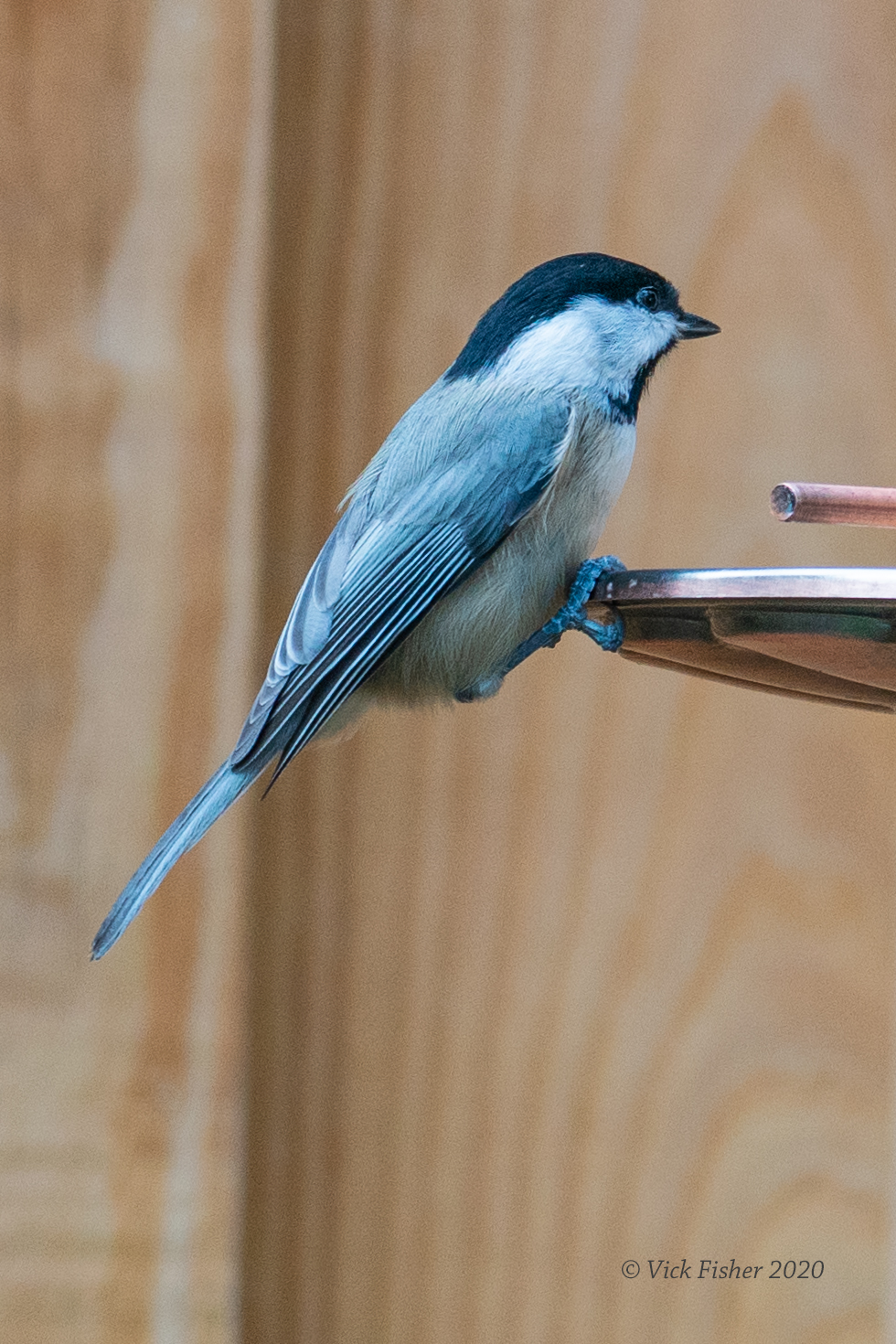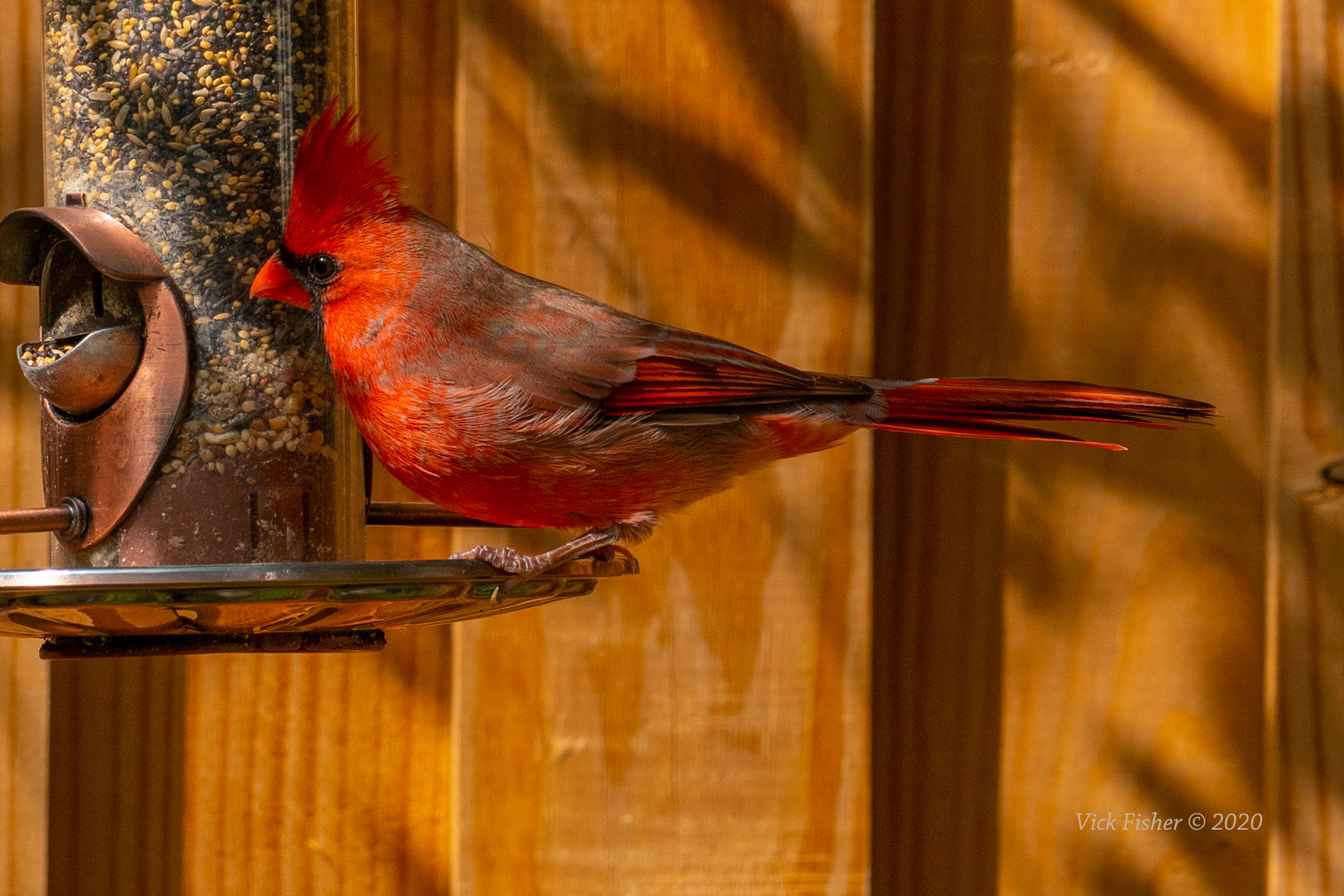So, the plural of titmouse is titmice, right? Yes, we have lots of titmice in our backyard, along with blue jays, cardinals, a couple of types of woodpeckers, doves, house finches, and chickadees.
Here's one of a dove and a blue jay sharing the feeder at the same time. Both are keeping an eye on the guy with the camera.
I like this airborne dove shot. I didn't realize how colorful they can be. The pose reminds me of religious imagery of a dove coming down to bring peace on earth.
We get to see these tufted titmice just about every day. You can see how titmice have a yellow edge just under the front of their wings. This one is sharp enough that you can see the white window frames of our house reflected in its eye.
Another tufted titmouse. I like that you can see the feathers interweaving on his chest.
This is a bird I'd seen for years, but never realized it wasn't a species I didn't know about. Sometimes, when seeing it from the front, I would think it was a robin. Other times, when seeing it from the back, I would think it was a sparrow. But the size is too small for a robin, and the color is red, not the orange of a robin, and the red extends to his head also. It's a house finch. We're learning so much from having a bird feeder!
Sometimes, we get a double-feature at the bird-feeder. A tufted titmouse and a house finch sharing here. The house finch is not sharp, so not a good photo - but I just wanted to show them hanging out together.
The chickadee is a tiny bird, about two-thirds the size of a sparrow.
Here's the largest woodpecker we see in our neighborhood. The red-bellied woodpecker is not very red-bellied. Even the guidebooks say the name is a little confusing. There is a little bit of red on his belly, but I would have guessed he'd be called a red-headed woodpecker. Also, we read the male's head is more covered in red as it ages. A couple of our friends pointed out how he has a sunflower seed from the feeder in his mouth.
Finally, a type of woodpecker not much larger than a sparrow. I'd never heard of these before. They live near us, but they don't come to the feeders very often. We've seen a couple of them together a few times. It's called a downy woodpecker.






































